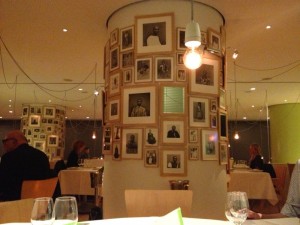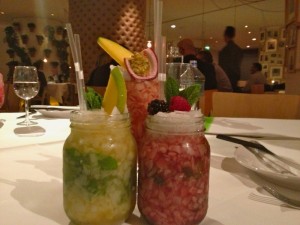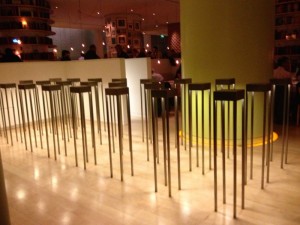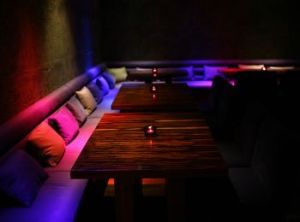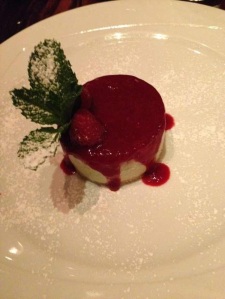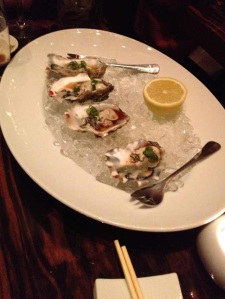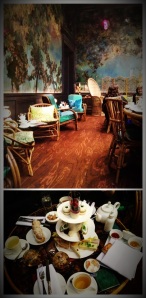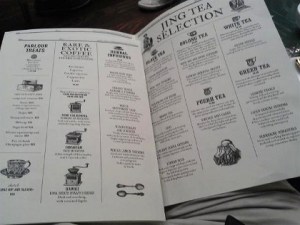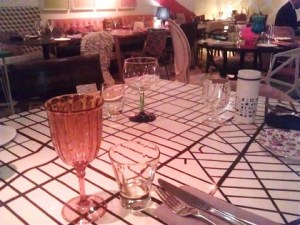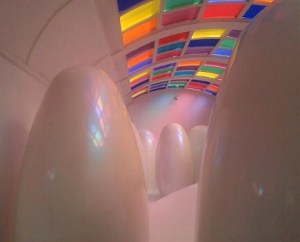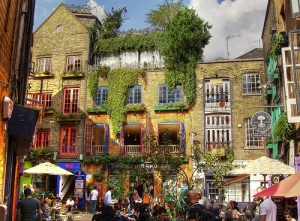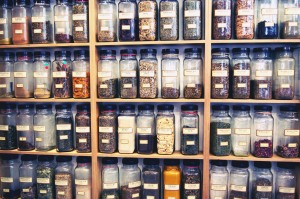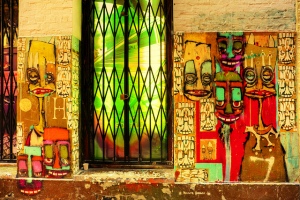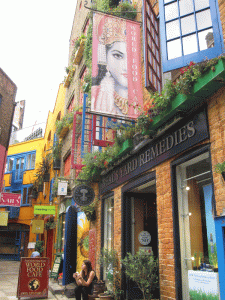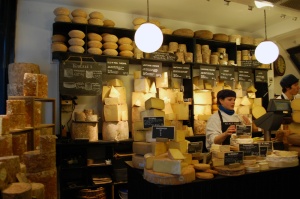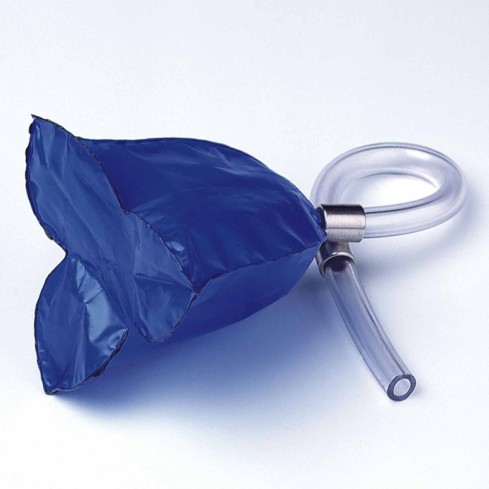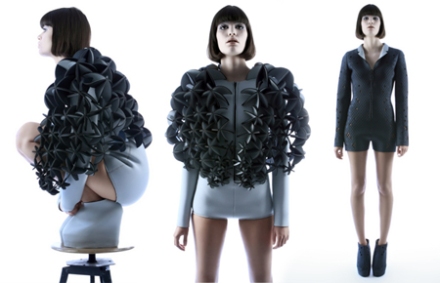
Recently, I’ve been to Lisboa with the whole family, which s very satisfactory as we,ve getting there by car long way from Madrid, Spain.
This is my second time in Lisboa. Everything to me is very different as the first time is about 8 years ago. I kept the old memories with me and some excited new aventures were come to me.
As you know everytime you go to some new places you will have a nostalgic feeling and curiosity on explore something new but still not very confident on what you are going to encounter. And when you revisit that place you will still find something new maybe its because you’ve been growing up…That’s life. But I like enjoying my life. Explore the new part of my old town.
On arrival
Dump your bags and head straight to Lisbon’s best spot for sundowners at the outdoor riverside ‘beach bar’, Kubo (4) (Rua da Cintura, Cais do Sodré; 00351 21 3932930). Each night, Lisbon’s bold and beautiful are to be found sprawled over the plump white cushions, sipping mojitos while the sun drops over the Tejo estuary. 10pm Your first dinner should be at one of Lisbon’s hobbit-sized, hole-in-the-wall joints like Cervejaria Ramiro (5) (Av. Almirante Reis 1; 00 351 21 885 1024; cervejariaramiro.pt,). Do as the locals do, and order a platter of percebes (goose barnacles) and a tumbler of icy Sagres lager. The bill, which is scribbled by the dickey-bow-donning waiter on the paper tablecloth, rarely stretches beyond £15 per-head. 12am Midnight is still considered early evening in Lisbon. The city’s nightly cycle of revelry always kicks off in Bairro Alto. In truth, it doesn’t matter which bar you choose as the real party is outside in the labyrinth of raucous cobbled lanes. Grab a plastic cup of caipirinha at Majong (6)(Rua da Atalaia 3, Bairro Alto), and dance outside.
If you still have energy to spend, Santiago Alquimista (Rua de Santiago 19; 00 351 218 884 503; santiagoalquimista.com) is a cavernous club buried deep into the Moorish foundations of the São Jorge Castle. Expect anything from karaoke to Cuban salsa.
Santiago Alquimista is a cavernous club buried deep the foundations of the São Jorge Castle
Alamy
The next day
Grab a breakfast of coffee and custard tarts at Pasteis de Belém (7)(Rua de Belem 84; pasteisdebelem.pt) before wandering through the cloisters of the Mosterio dos Jeronimos (8) (Praça do Imperio, entry £5) next door. The main attraction is the delicate Gothic chapel, in which some of Portugal’s greatest historical figures are entombed.
The surrounding district is an ornate homage to Portugal’s colonial and maritime past, the pinnacle of which is found down river at Torre de Belém (Praça da Torre de São Vicente de Belém, entry £3), an imperious 15th Century Byzantine-style fortress.
Torre de Belém, an imperious 15th Century Byzantine-style fortress
Alamy
11.30am With Lisbon’s many murals and streets lined with azulejo (ceramic tiles), urban art has always been a part of the city’s identity. The historic city centre now has a 21st-century twist following last summer’s Crono Project (cronolisboa.org), when local and international graffiti artists were commissioned to use the grand neglected period building of the city’s central business district as a canvas. It may not be to everyone’s taste, but it is certainly striking. 2pm Manifesto (9)(Largo de Santos 9; 00 351 213 963 419, around£40 a head) is a talk-of-the-town establishment where lunch involves bizarre but delicious dishes like prawn sausages and pig’s trotter samosas. 4pm Take a train to Cascais (see Lisbon checklist for details), where you can hop on a free bike, available opposite the station. Then cycle along the sea-sprayed coastline to the surfing area of Guincho, five miles away.
After a dip in the frosty Atlantic, grab a cone of ice cream at Santini (Av. Valbom Cascais), purveyor to royal courts across Europe.
9.30pm Unassuming rustic grub is served in under hanging copper pots and dangling legs of ham at Solar dos Nunes (10)(Rua 205 Lusiadas 68-72. T: 00 351 21 364 7359, around £20 a head). Order the ameijoas a alentejano (clam and pork stew) – a surf-and-turf favourite among the rotund regulars. 11.30pm Lisbon’s A-listers are often spotted at Silk (Rua da Misericórdia 14; silk-club.com). The rooftop members’ club stands like an ivory tower six floors above the rowdy Bairro Alto district with twinkling 360-degree views across the city. Membership for Silk is free and available online on the club’s website, but it does require a photo before approval is given, so be sure to look your best.
If you’ve got the stamina, finish your night with a dance on the roof terrace at super-club, Lux (Av. Infante D. Henrique Armazém). Owned by John Malkovich, the converted docklands warehouse pulsates until dawn and beyond.
Top sights
Elevators: Santa Justa and Gloria
Cabe da Roca
The Southern West cabe in Europe. Better to get there around 4,30 pm in winter and 9 pm in Summer then you can catch up the sunset!
Mosteiro dos Jerónimos
This imperious 15th-century Manueline monastery was built to commemorate Vasco da Gama’s “discovery” of India. The main attraction is the delicate Gothic chapel that opens up on to a grand monastery, in which some of Portugal’s greatest historical figures are entombed.
Address: Praça do Imperio. Contact: 00 351 21 362 0034. Opening times: Tue-Sun, 10am–5pm (until 6pm in summer). Closed Mon. Admission: €7.
Castelo São Jorge
The winding medieval streets of Lisbon’s most ancient neighbourhood, Alfama, twist up to the city’s Moorish pinnacle. The dusk-orange walls of the ancient castle date back to the ninth century and lord over the city, being visible from almost every street.
Address: Castelo. Contact: 00 351 21 887 7244. Opening times: Daily, 9am-6pm (until 9pm in summer). Admission: €7.
Tram 28
The most charming way to tick off a few sights, the wooden tram 28 rumbles through Lisbon’s prettiest and most historic streets. Starting at the foot of Bairro Alto, the vintage carriage trundles through the shopping districts of Baixa and Chiado before lurching and labouring past the churches and castles on the cobbled hills of the Alfama and Graça neighbourhoods.
Departs to Graça every 15 minutes from Praca Luis de Camões. Fare: €2.50.
Torre de Belém
An iconic symbol of maritime Lisbon, this Byzantine and Gothic tower stands out over the mouth of the Tejo, guarding the entrance to the city’s harbour. Reached via a walkway raised out of the water on timbers, the tower is filled with intricate stonework and has wide Atlantic views.
Address: Praça da Torre de São Vicente de Belém. Contact: 00 351 21 362 0034. Opening times: Tue-Sun, 10am-6.30pm (until 5pm in winter). Admission: €4.
Museu Gulbenkian
One of the 20th century’s great philanthropists, Armenian Calouste Gulbenkian, left much of his art and historic artefacts to his favoured city, Lisbon. The museum set up in his honour now houses one of Europe’s most epic collections. Look out for priceless Hellenic vases, ancient Chinese porcelain and paintings by Rembrandt, Monet and Van Dyck. There’s also an affiliated modern art museum opposite.
Address: Avenida de Berna 45A. Contact: 00 351 21 782 3000. Opening times: Tue-Sun, 10am-5.45pm. Admission: €4.
Day trips
Sintra
The aristocratic hill town to the west of the city is a neverland of fairytale palaces, manicured floral gardens and wild woodlands. The train to Sintra departs from Rossio station every 20 minutes, takes about 40 minutes and costs €1.95.
Sintra is a 40-minute train ride away
Cascais/Estoril and beyond
These neighbouring beach towns are the best of the city’s seaside suburbs. Both are destinations in themselves. Lovely coves of sand lick along the coast between the two towns, which are connected by an Atlantic-front promenade. The region’s best beaches (Adraga, Guincho and Grande) are found on the coastal road north, beyond Cascais. From Cais do Sodré station, the coastal train to Cascais and Estoril leaves every 20 minutes, takes about 40 minutes and costs €1.95.
Solar do Nunes
This is the place for earthy, rural and traditional food from the Alentejo region, the bread basket of Portugal. Expect honest and hearty country fare such as meaty stews and fresh fish. Look out for the local favourite, ameijoas alentejano (clams cooked in a wine, chilli, coriander and garlic sauce with pork).
Address: Rua 205 Lusiadas 68-72. Contact: 00 351 21 364 7359. Prices: Two courses, including wine, from £30. Opening times: Mon-Sat, 12 noon-4pm, 7pm-midnight. Reservations: Necessary at weekends. Payment type: Cards accepted.
A Picanha
“How do you like your steak?” is the only question you’ll be asked in this all-you-can-eat Brazilian-style barbecue joint. (The Portuguese for rare is mal passado, by the way). Whole slabs of rump steak are grilled over flames before being sliced thinly and served with salad, beans and toasted manioc flour. The caipirinhas are always excellent, too.
Address: Rua das Janelas Verdes 96. Contact: 00 351 21 397 5401. Prices: Meals, including wine, from £20. Opening times: Daily, 12.30pm-3.30pm, 7.30pm-midnight. Reservations: Not necessary. Payment type: Cards accepted.
£
Bon Jardim
Right in the middle of town, this is the place for Portugal’s no-nonsense national dish of crispy piri-piri-covered chicken and chips. Local form dictates this is best eaten with your hands while loudly scoffing at the football or Brazilian soap that blares from the television.
Address: Travessa de Santo Antão 11. Contact: 00 351 21 342 7424. Prices: Two courses, including wine, from £15. Opening times: Daily, 12 noon-11.30pm. Reservations: Not necessary. Payment type: Cards accepted.
Lisbon isn’t a major shopping city, but if you know where to look you can unearth some excellent local products and bargains. The vintage nature of the city centre, in particular around Baixa, is inspired by the century-old shops run by the same families for generations. The old-world feel inside many of the haberdasheries and fabric stores, which overflow with colourful beads and accessories, is a real treat for lovers of antiquated crafts and decor. The nearest you’ll find to a high street is either in Chiado or Avenida da Liberdade. Look out for international brands such as Zara and Mango, sold at roughly half the price you’ll see in the UK. The most famous market is Feira da Ladra (Campo de Santa Clara), otherwise known as the thieves’ market, which is nearly 1,000 years old. Not quite the place to go looking (openly at least) for your stolen camera, the market runs every Tuesday and Saturday and sells handmade crafts, CDs, books, clothes, antiques and furniture.
I can never leave Lisbon without a boxful of the flaky and creamy pastel de nata (custard tart) from Pasteis de Belém (www.pasteisdebelem.pt) at Rua de Belém 84.
The Mosterio dos Jeronimos in Lisbon, the defining structure of Portugal’s Age of Discoveries
Lunch
Hail a taxi back towards the city-centre, stopping in Alcantara for lunch at Solar do Nunes (3)(00 351 21 364 7359, Rua Dos Lusiadas 68–70, mains from £10) . A rustic country kitchen with stone floors and copper pots hanging from the ceiling. This is a good spot to try honest, hearty favourites like ameijoas alentejano (pork and clam stew) and bacalhau à Lagareiro (grilled codfish.
Afternoon
Tick off the rest of the city’s main sights in one swoop by riding the sardine-can Tram 28 (£2.20). Jump on the rickety wooden cart at Praça Luis de Camoes in Bairro Alto and ride it through the shopping districts of Baixa and Chiado. It then heaves its way up the steep cobbled hill to the Moorish Alfama neighbourhood. Get off to have a nose around the Romanesque Se Cathedral (4)(Largo da Sé, free entry) – home to Gothic tombs and ruins of a thousand-year-old mosque. The century-old tram then tugs and lurches all the way up to the city’s peak at Castelo. Here you’ll get a peachy sunset view over the twinkling Tejo estuary from the cannons that poke out of walls of the São Jorge Castle (entry £4.40).
Take the tram back down the hill for dinner. Set in a converted cloisters, Largo (00 351 21 347 72 25, www.largo.pt, mains from £15) is a pioneer in the new wave of modern Portuguese dining. The standout dish is certainly the cod marinated in port and soy sauce – a tribute to Nobu’s black cod, apparently. Then head for drinks in the perennial street party of the Bairro Alto district.
Old Hands
Morning
Once you’ve got to grips with the city, explore the sublime suburbs – Lisbon’s greatest draw. Take the 30-minute train from Rossio station up to the hilltop town of Sintra, where you can take your pick of fairy tale palaces. Marvel at the Manueline opulence of Pena Palace (entry £5) and the Palacio Nacinal de Sintra (entry £3.50) before tramping through the wild rhododendrons and lotus flowers of Monserrate Park (entry £3).
The magnificent setting of Sintra, about a 30-minute train journey from Lisbon
From Sintra town-centre, take the 403 bus along the coast to the beaches of Cascais – a dainty fishing village turned seaside resort. The 20-minute route will take you to Lisbon’s prettiest beach and surf Mecca, Guincho, and Europe’s most westerly pinnacle at Cabo da Roca. Stay in Cascais for drinks and dancing at Lisbon’s hippest venue, The Mix (0214 823 490, www.farol.com.pt) in the achingly cool, Pilippe Starck-inspired Farol Design Hotel. Situated on a rocky outcrop, looking out over the Atlantic, a glossy crowd of Lisbon’s bold and beautiful gush at each other over plates of sushi and fusion dishes such as lobster and ginger risotto. Then go and throw shapes around the pool before dancing on the tables at the hotel’s On the Rocks Bar.
Where To Eat
What To See
ALFAMA Visit the Alfama district by tram. Jump on the Number 28, an ancient vehicle, wood-panelled on the inside, that grinds up the precipitous sloping streets, at its stop in Rua da Conceiçutildeo. It will take you up into the heights, past the Cathedral and the church of Sao Antònio (Saint Antony being Lisbon’s most prayed-to saint, since he was born on the site of this church and baptised in the cathedral). At the foot of the Alfama, a brand-new museum and performance space, the Casa do Fado e da Guitarra Portuguesa, has opened in a pink-painted former pumping station, and dozens of fado-themed of bars and restaurants (fado is Portugal’s very own urban folk music and Lisbon’s answer to the blues) have sprung up all over the bairro. BAIRRO ALTO The Bairro Alto is a sleepy residential neighbourhood by day, low-key and discreet. By night, it transforms itself into an ebullient party zone where, on a weekend, it seems that the entire city has pitched up to drink, eat and dance until the early hours. BAIXA The Baixa is the busy commercial district laid out in a grid behind the Praça de Comèrcio. BOAT TRIPS Take a boat trip from the Praça, and you will pass the Alfama, a harmonious jumble of yellow, pink and blue-tiled walls and terracotta roofs crowned with the Castle of São Jorge. Up on the left, on a hill of its own, is the Bairro Alto, the Alfama’s rival in civilised decrepitude. Pass under the great Ponte 25 de Abril, which spans the river in a graceful scarlet arabesques and three of Lisbon’s finest sights come into view: the ice-cream turrets of the Jèronimos monastery, built to celebrate Vasco da Gama’s discovery of the sea route to India; the Torre de Belèm, a defensive tower with Moorish spires and curlicues; and the impressive modern monolith known as the Padrao dos Descobrimentos, which depicts the great 15th-century explorer Prince Henry the Navigator standing on the prow of a ship, gazing out solemnly towards the open sea and the unknown lands beyond it. CHIADO The Chiado neighbourhood is a delightful outpost of 19th-century elegance, now thoroughly restored since a disastrous fire swept through its streets in 1988. It is proud of its opera house, its smart cafes such as A Brasileira, on the Rua Garrett, and its posh shops. HISTORIC PUBLIC TRANSPORT Lisbon makes a speciality of its historic modes of public transport: the tram, the cable car and the elevadores (lifts) which crank you up mechanically from one part of the city to another. Opposite the Casa Chineza stands the Elevador Santa Justa, a grey-painted filigree structure with a Gothic look. MARKETS Feira da Ladra is Lisbon’s most famous flea market, where piles of fascinating junk are laid out along the pavement MUSEUMS As a historic capital city, Lisbon has a long list of cultural and artistic sights, some of the high points being the Gulbenkian Foundation (www.gulbenkian.pt), the Museu Nacional de Arte Antiga (www.mnarteantiga-ipmuseus.pt) and the Centro Cultural de Belèm (www.ccb.pt), a temple of contemporary culture housed in a post-modern fortress by the river. (Take the little train from Cais do Sodrè station.) The Museu do Azulejos (tile museum) is a particular gem, and much more restful to the spirit than the kind of Important Art Museum in a foreign city that you enter with a heavy heart. But the best Lisbon sights of all are the streets and neighbourhoods, the cafès and bars and old-fashioned corner shops. PRACA DE COMERCIO There is no better architectural expression of the city’s maritime character than the Praça de Comèrcio, the great civic square of which three sides are walls of arches and colonnades and mustard-yellow facades, while the fourth side is open to the river and the sea.
As Colunas
.
O Mattos
Cervejaria Ramiro
Avenida Almirante Reis 1, Intendente, 1100 | 1150-007, Lisbon, Portugal 菜系:海鲜
百年老店Pastéis de Belém.

|
Rua Belém 84 1300 Lisbon, Portugal +351 213 637 4
FRAGIL MAR LDA 地址:Rua dos Correeiros 216/218
23
|
店名:Portugalia Almirante Reis 地址:Av. Alm. Reis, 117

GOOD NIGHT! GOOD MORNING TO THE EASTERN HEMISPHERE
